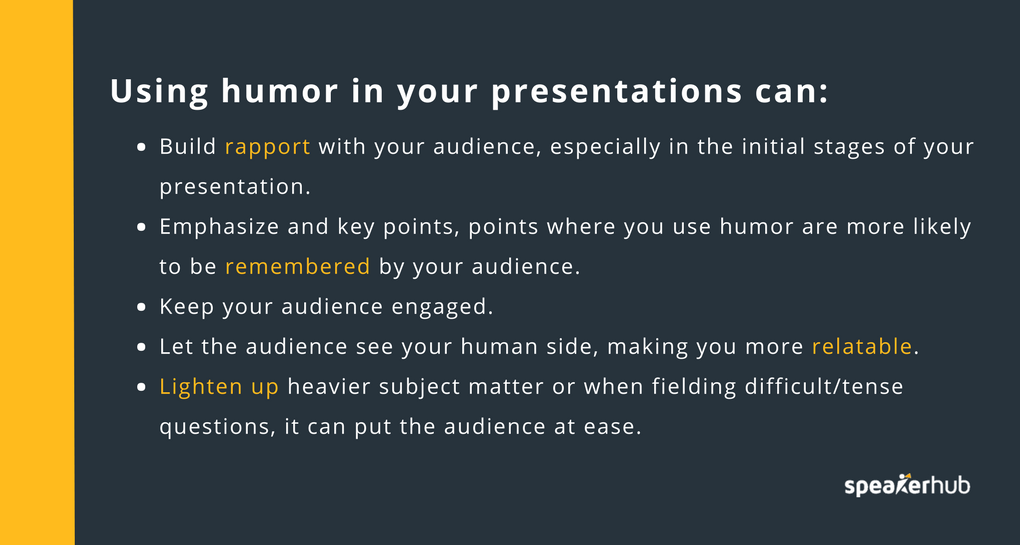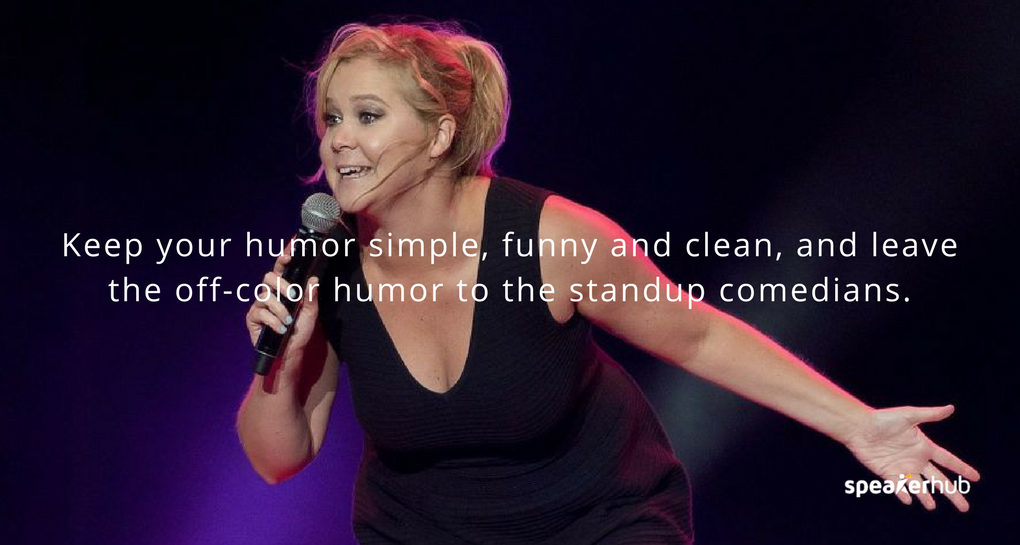5 Tips on using humor to engage your audience

Have you ever been in the audience in front of a speaker who had you chuckling throughout their entire presentation?
How did it make you feel about the speaker? About their message?
Apart from leaving your audience with a positive impression about who you are as a person, using humor during your presentation can make a significant impact on whether your audience engages with and retains your message.

But it is not always easy to get the crowd laughing in a way that supports your message.
In this article, we are going to explore how using humor can make or break your presentation, and some of the ways to use it to effectively engage your audience.
Using humor in your presentations can:
- Build rapport with your audience, especially in the initial stages of your presentation.
- Emphasize and key points, points where you use humor are more likely to be remembered by your audience.
- Keep your audience engaged.
- Let the audience see your human side, making you more relatable.
- Lighten up heavier subject matter or when fielding difficult/tense questions, it can put the audience at ease.

You don’t need to be a comedian to be able to use humor effectively, but how can you get your audience to laugh more?
Start each point with a joke?
Queue up a handful of Louis C.K. stand up clips into your presentation?
Try integrating some improv into the session?
Below are some tips on how to get your audience chuckling, while engaging with your message.
Five tips on using humor in your presentation
1. Incorporate it naturally.
Use anecdotes and funny stories from thing that have happened in real life.
They are easy to relate to, and used correctly, can have your audience laughing while hitting your message home.
2. Make them relevant to your point, theme or story.
The jokes and stories should offer some kind of insight, or add value to your point.
Going off on a long tangent of a joke or story that doesn’t relate could be perceived as a waste of your audience’s time, after all, they have come to learn from your expertise and your insights.
3. Customize your jokes to your audience.
Who is your audience, and will they be able to relate to your joke?
While your hilarious story about how you thought “lol” meant “lots of love” and proceed to make a social faux-pas might be appropriate for some audiences, if you are taking to a group of tech-savvy millennial, it might not have the same relevance or make you engaging.
Know the demographics, figure out what will be relevant to them, and then customize your jokes and stories to capture their attention and interest.
Not all humor is ubiquitous. What works with one demographic or culture may not work in another.

4. Always avoid offensive humor.
While this might seem obvious, an off-color joke can immediately sink your presentation. It can isolate or offend audience members, and once you lose that credibility, it can be incredibly difficult to come back from.
Never use ethnic, racist, sexist, indecent or vulgar humor. Avoid black comedy, blue comedy, insult comedy, excessive sarcasm and cringe comedy like the plague. Keep it simple, funny and clean, and leave the off-color humor to the standup comedians.

5. Do your cultural research.
Humor seldom works the same way from culture to culture.
This is why it is so important to find out what makes your audience tick, what they will like, and what could potentially offend them before even getting on stage.
There are a few options for figuring out if your joke is going to fly or crash, but one of the most straightforward ways is to ask someone from within that culture if the joke will work or not.
Even when you use humor skillfully, avoid expecting that your audience will alway end up rolling on the floor laughing- even the standup comedians who do this professionally sometimes fall flat!
At the end of the day, the audience did not come to be entertained, but to learn from your expertise. This being said, you can deliver your message more effectively if people can relate to you and are engaged: using humor is one of the best ways to connect with your audience.

Get more speaking opportunities with SpeakerHub. Sign up here.







